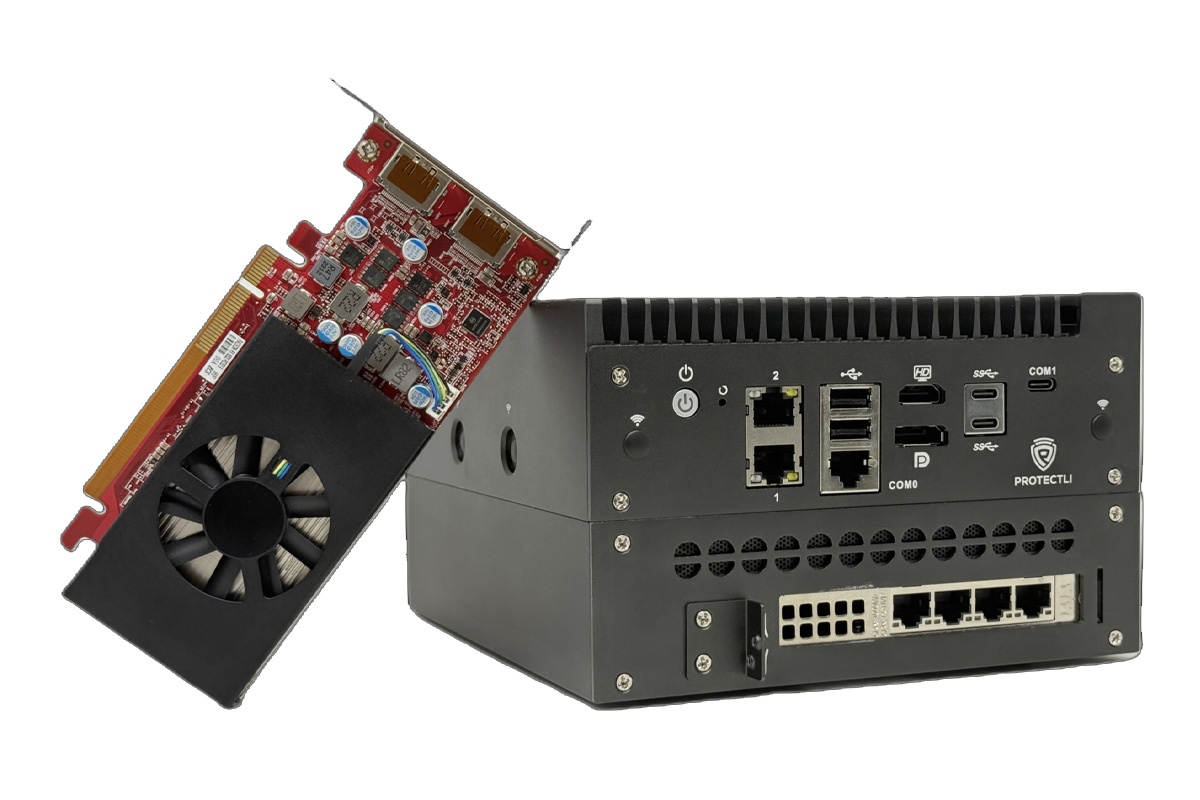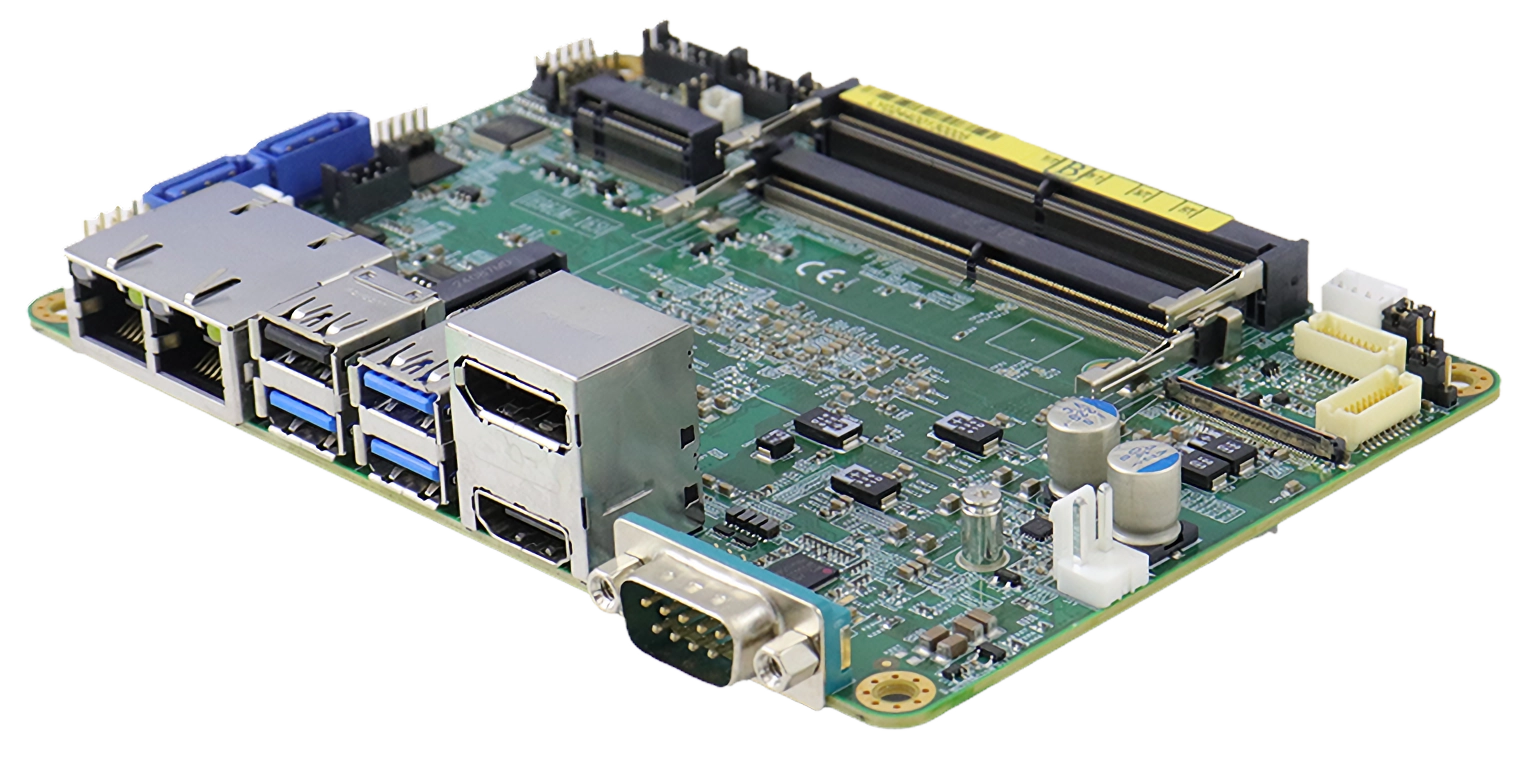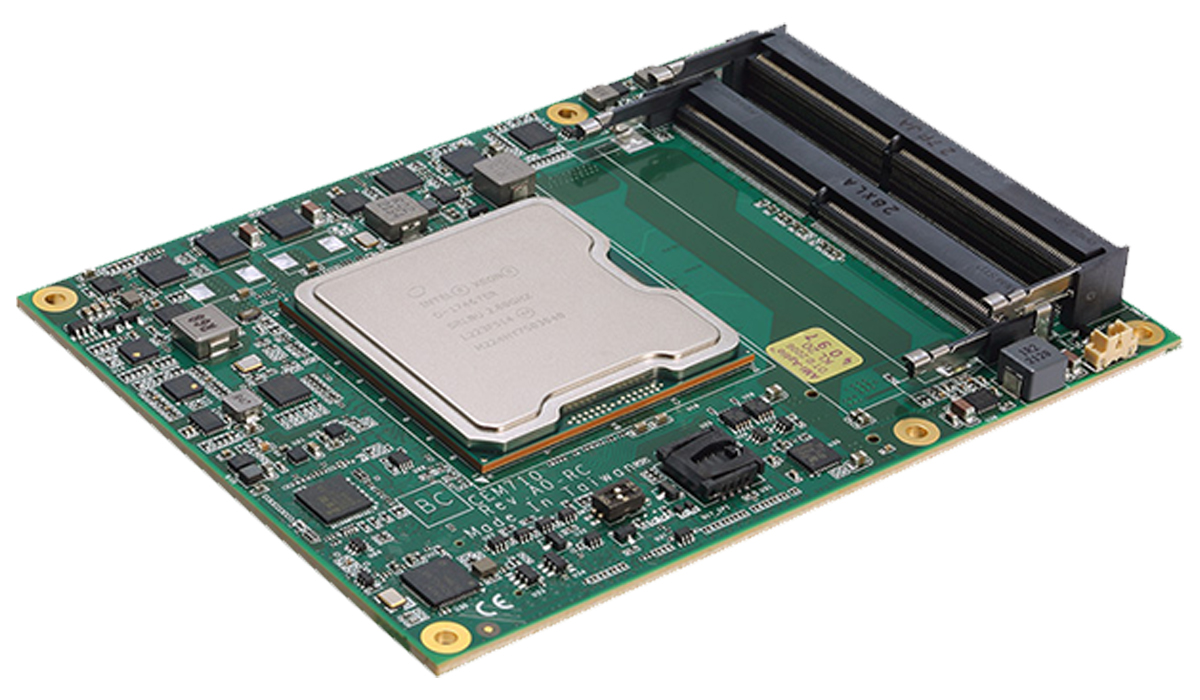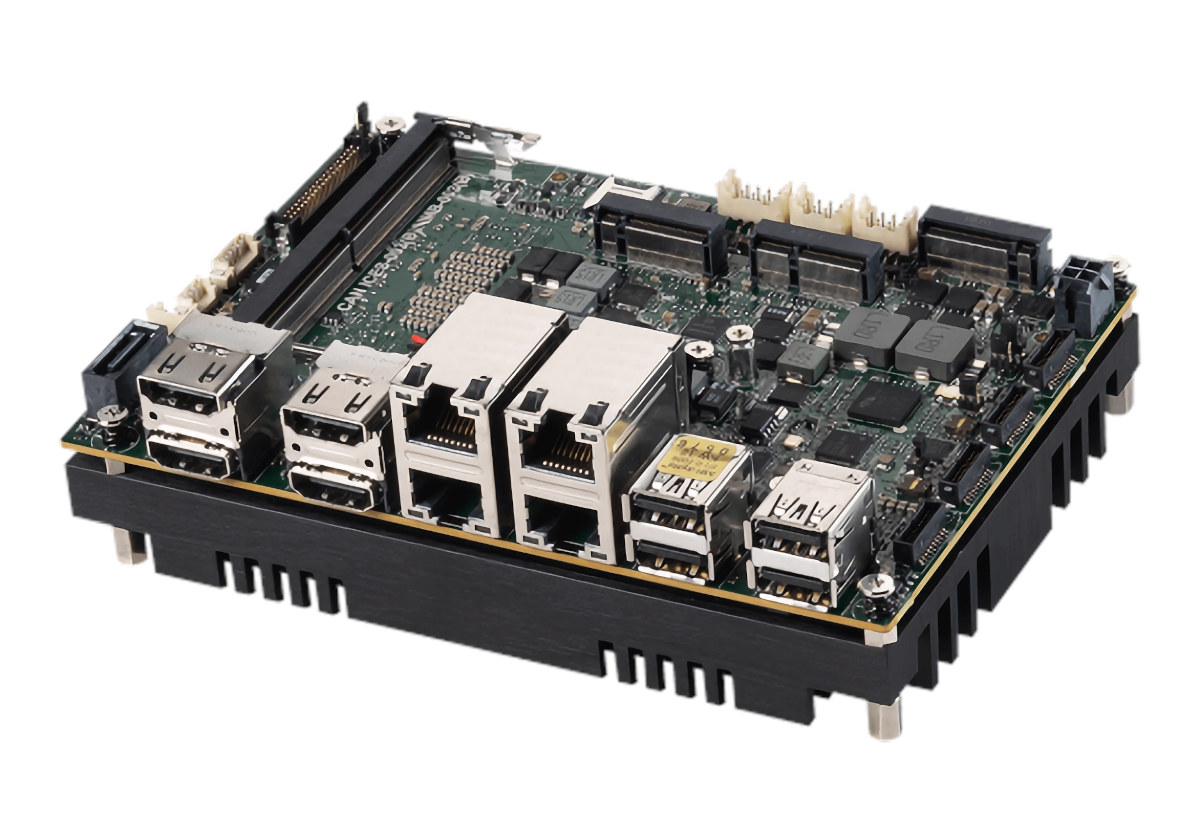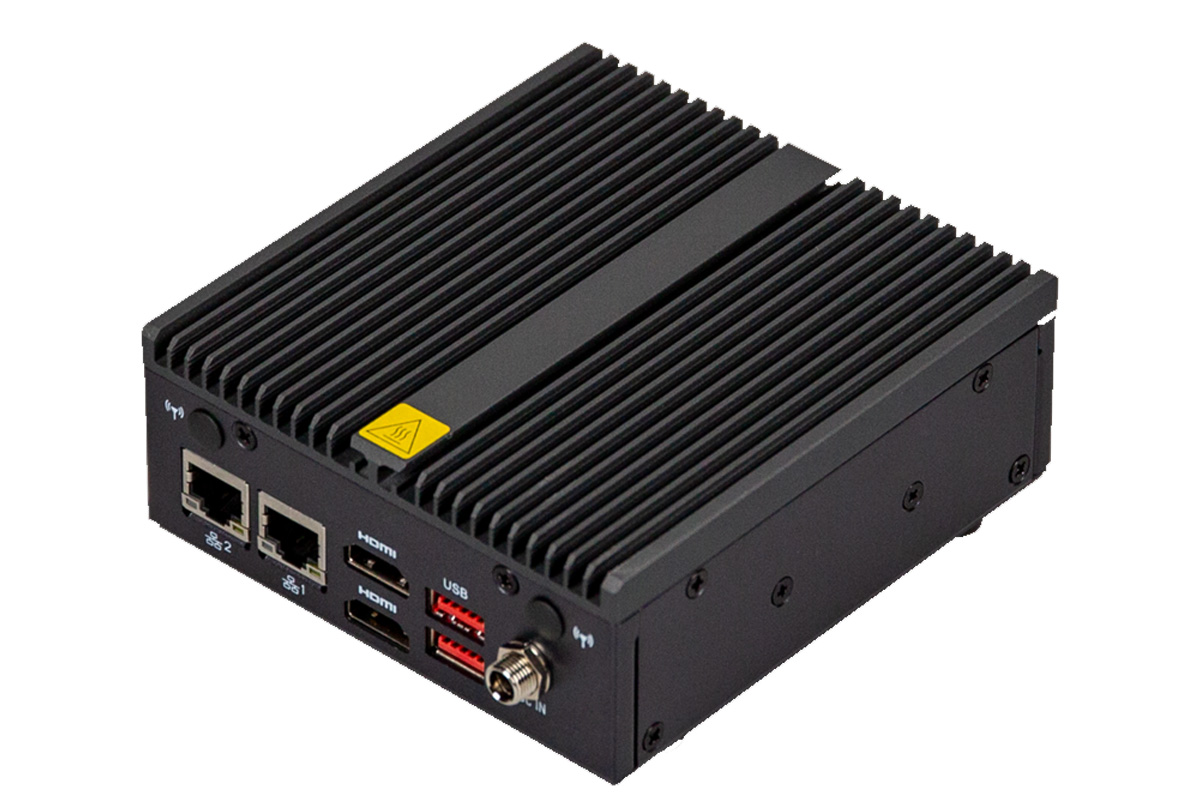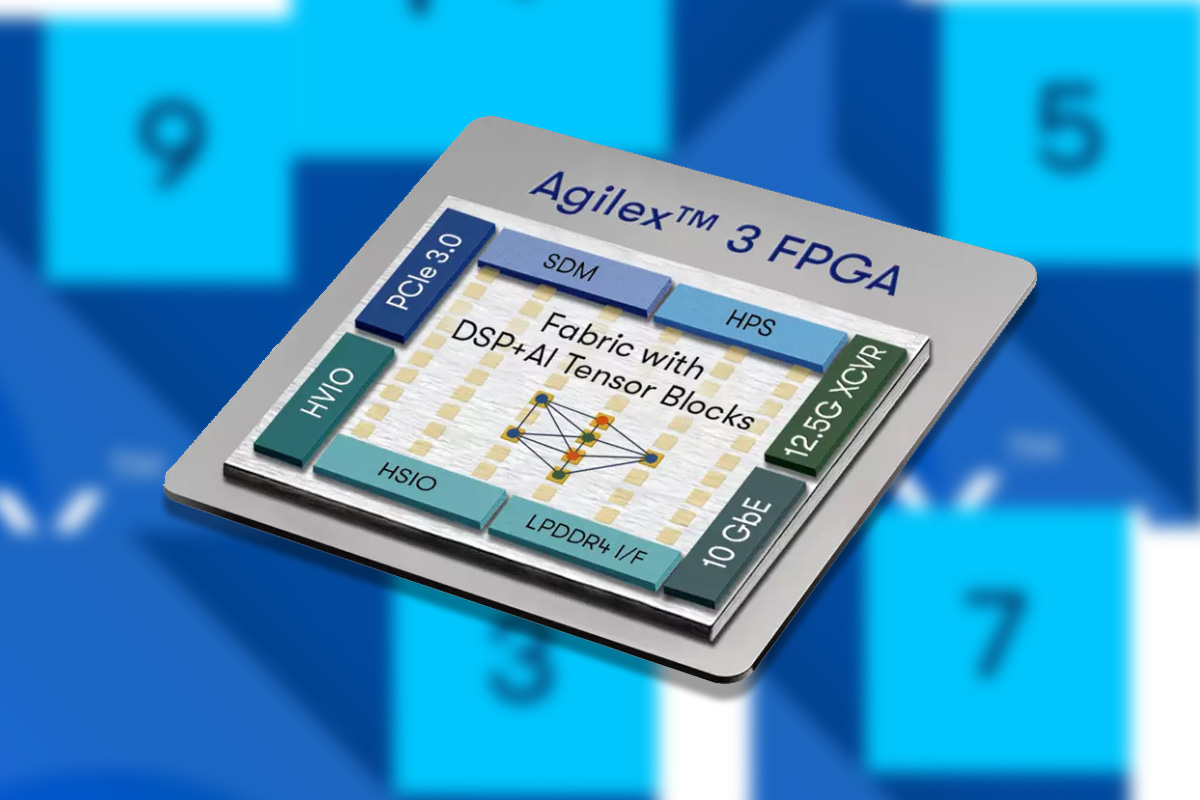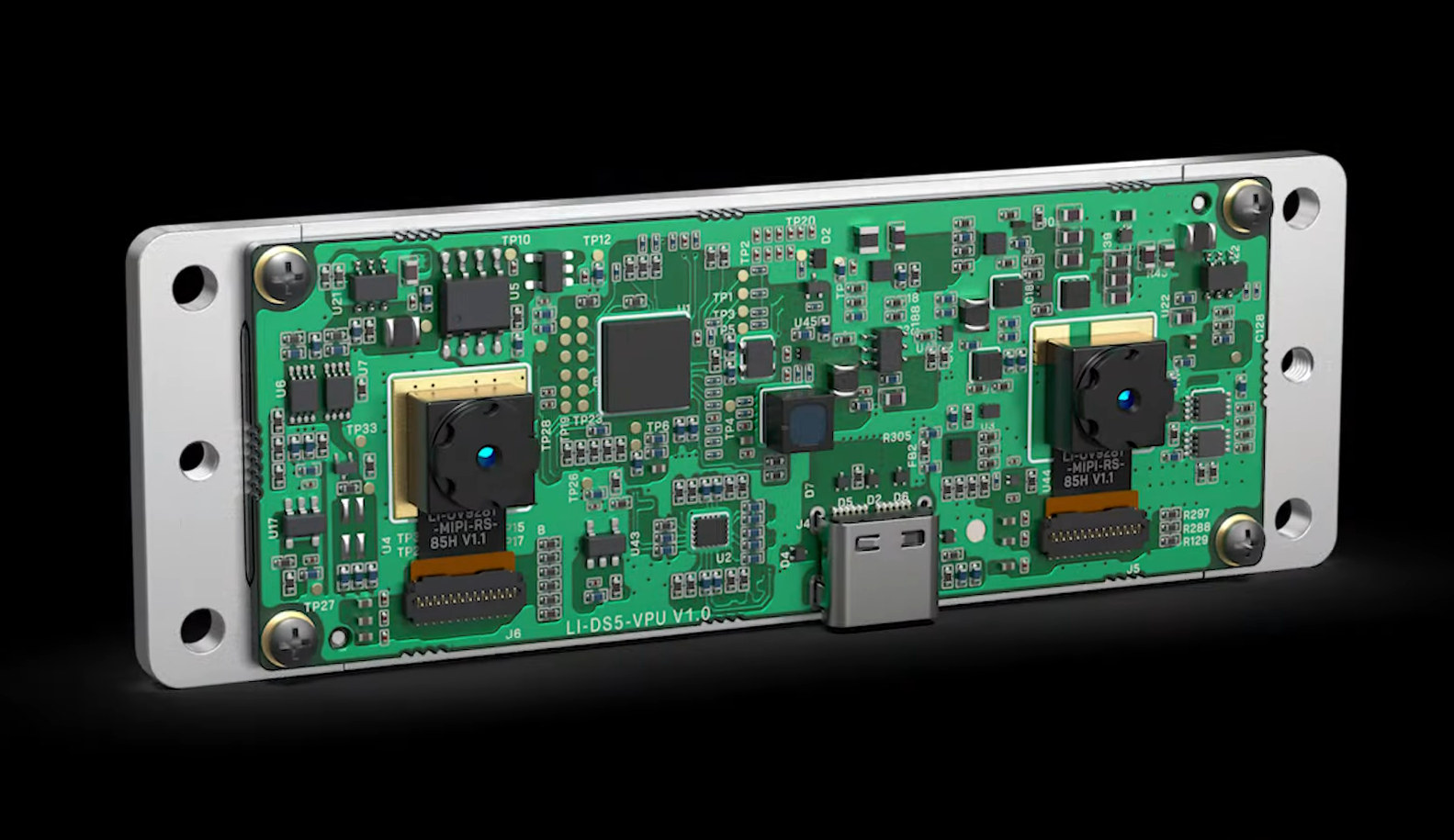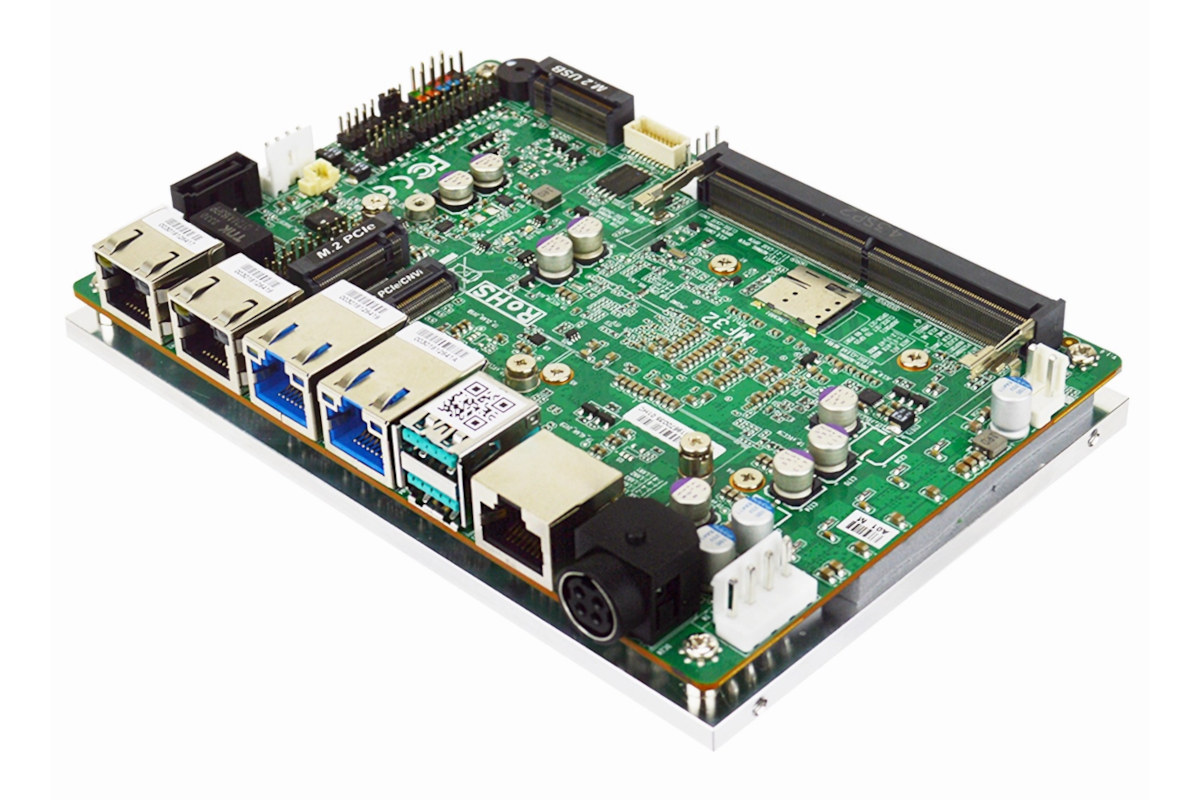The Protectli VP32XX is a family of Alder Lake-N network appliances for high-performance applications. This compact device comes in two variants: the VP3210, powered by a quad-core Intel N100 processor, and the VP3230, built around an eight-core Intel Core i3-N305 processor. Both support up to 16GB of DDR5 RAM and the company mentions that they have tested it with up to 48 GB. They also include 32GB of eMMC storage with dual 2.5GbE. Storage options include dual M.2 NVMe SSD slots and an expansion bay that supports up to four 2.5-inch SATA SSDs, making them ideal for NAS applications. Additionally, they have various I/O options, including HDMI, DisplayPort, multiple USB ports, and a PCIe slot, making them compatible with multimedia workstations or networking hubs. Protectli VP3200 specifications: Processor VP3210 – Intel Processor N100 quad-core Alder Lake-N processor @ up to 3.4 GHz (Turbo) with 6MB cache, 24EU Intel HD graphics @ 750 MHz; […]
iBASE IB962 3.5-inch SBC features Intel Core Ultra 5/7 SoC, up to 64GB SODIMM memory, and three M.2 slots
iBASE Technology has unveiled the IB962 3.5-inch single-board computer (SBC) powered by the Intel Core Ultra 5/7 100 Series processor family (formerly Meteor Lake U/H) and delivering an “optimal balance of performance and power efficiency.” The IB962 3.5-inch SBC mostly follows the IB961 board‘s design, offering more powerful SoC options, more system memory, and an HDMI 2.0 display interface supporting 4K resolution at 60Hz. It provides dual Gigabit Ethernet networking, three USB 3.2 ports (two via pin headers), three USB 2.0 ports, and three M.2 slots (M-Key + E-Key + B-Key) for networking, storage, and cellular communication. While IB962 is not a single-board computer in the strictest sense since it uses SODIMM sockets, it is still quite compact and useful for portable or space-constrained applications. It is intended for industrial automation, manufacturing, retail, entertainment, healthcare, and various edge AI applications. It is a larger alternative to AAEON’s PICO-MTU4 Pico-ITX SBC […]
Axiomtek CEM710 COM Express module features Intel Xeon D-1700 SoC with up to 100Gbps Ethernet support
In 2022, we covered Intel’s Xeon D (Ice Lake-D) processor family, which includes the D-2700 and D-1700 models. These processors are designed for software-defined networking and edge applications, providing data center-grade capabilities at the edge. Key features include integrated AI and crypto acceleration, built-in Ethernet, and support for Intel Time Coordinated Computing (TCC) and Time-Sensitive Networking (TSN) to ensure high reliability. Leveraging these advanced capabilities, companies like ADLINK Technology and Congatec have introduced COM-HPC server modules and COM Express Type 7 modules based on the new Xeon D lineup. Axiomtek’s CEM710 is a COM Express Type 7 Basic Module powered by Intel Xeon D-1700 Series processors, designed for edge computing, industrial automation, and data-intensive applications. It offers up to 10 cores, 100Gbps Ethernet, and 64GB of DDR4 ECC memory, along with PCIe Gen3 slots for expandability. With rugged features and TPM 2.0 for security, it ensures reliable performance in demanding […]
MSI MS-CF17 is a 3.5-inch fanless single board computer with Intel Raptor Lake-P SoC
The MSI MS-CF17 is a fanless 3.5-inch single board computer powered by the Intel 13th Gen Raptor Lake-P series with options for embedded and industrial SKUs. It comes with up to 32GB of DDR5 SODIMM memory and features an M.2 M key (PCIe Gen4) socket and a SATA III storage slot. It also supports four 2.5GbE ports, four internal COM ports, eight USB interfaces, and M.2 Key-B and Key-E sockets for wireless expansion. It supports four independent displays via four HDMI 2.0 ports and an eDP/LDVS display interface. Potential applications for the fanless single board computer include industrial automation, digital signage, edge computing, transportation, and imaging systems MSI MS-CF17 specifications: SoC – Intel 13th Gen Raptor Lake-P Embedded/Industrial SKU Series; P-core: 4.3GHz ~ 4.9GHz; E-core: 3.2GHz ~ 3.7GHz; Intel Iris Xe Graphics (Core i5/i7) or Intel UHD Graphics (Core i3) Core i7-1365UE / i5-1345UE / i5-1335UE / i3-1315UE / U300E, […]
GIGAIPC QBiX-ADNAN97-A1 fanless industrial PC features Intel N97 CPU, dual HDMI, dual LAN
GIGAIPC QBiX-ADNAN97-A1 industrial PC is a compact system, powered by the Intel Processor N97 quad-core Alder Lake-N processor. This industrial PC supports up to 16GB of DDR5 memory and features flexible storage options with an M.2 slot for SATA or NVMe drives. Additionally, the QBiX-ADNAN97-A1 supports dual independent displays via two HDMI ports, It also offers dual Gigabit Ethernet, multiple USB 3.2 Gen 2×1 ports, an M.2 E-Key for Wi-Fi/Bluetooth expansion, and a COM port for legacy device connectivity. Designed for reliable operation, this fanless system is ideal for various Industry 4.0 applications, including industrial automation, digital signage, and edge computing. QBiX-ADNAN97-A1 industrial PC specifications SoC – Intel Processor N97 quad-core Alder Lake-N processor @ up to 3.6 GHz with 6MB Cache, Intel UHD Graphics; 12W TDP System Memory – Up to 16GB DDR5 4800 MHz via SODIMM slot Storage – M.2 2280 M-Key socket for NVMe or SATA storage Display 2x HDMI 2.0 […]
Altera’s 7nm Agilex 3 SoC FPGA features Cortex-A55 cores, AI Tensor Block, DSP, 10 GbE, and more.
Altera, an independent subsidiary of Intel, has launched the Altera Agilex 3 SoC FPGA lineup built on Intel’s 7nm technology. According to Altera, these FPGAs prioritize cost and power efficiency while maintaining essential performance. Key features include an integrated dual-core Arm Cortex A55 processor, AI capabilities within the FPGA fabric (tensor blocks and AI-optimized DSP sections), enhanced security, 25K–135K logic elements, 12.5 Gbps transceivers, LPDDR4 support, and a 38% lower power consumption versus competing FPGAs. Built on the Hyperflex architecture, it offers nearly double the performance compared to previous-generation Cyclone V FPGAs. These features make this device useful for manufacturing, surveillance, medical, test and measurement, and edge computing applications. Altera’s Agilex 3 AI SoC FPGA specifications Device Variants B-Series – No definite information is available C-Series – A3C025, A3C050, A3C065, A3C100, A3C135 SoC FPGAs Hard Processing System (HPS) – Dual-core 64-bit Arm Cortex-A55 up to 800 MHz that supports secure […]
Intel RealSense Depth Module D421 offers a low-cost depth-sensing solution at just $80
Intel RealSense Depth Module D421 is an entry-level stereo depth module with a 0.2 to 3-meter recommended range, a global shutter to capture motion without artifacts, and a 75° × 50° field of view (FoV). Intel has made RealSense Depth cameras for years, including the popular RealSense D435i with 6 DoF tracking introduced in 2018 that currently sells for about $320. But not all projects need the most advanced features and/or are viable when needing to spend several hundred dollars on the camera itself. The RealSense Depth Module D421 is a much cheaper way to integrate depth-sensing into projects at a much lower price point. It’s fairly similar to the earlier D435 but lacks an RGB camera. Intel RealSense Depth Module D421 specifications: Based on the Intel D4 Vision Processor Image sensor technology – Global Shutter Recommended Range – 0.2 m to over 3 m (varies with lighting conditions) Depth […]
Jetway MF32 3.5-inch SBC is offered with Intel Core i5-1335UE or Intel Processor U300, four 2.5GbE, M.2 expansion
Jetway MF32 is a 3.5-inch single-board computer (SBC) offered with either an Intel 13th Gen Core i5-1335UE or an Intel Processor U300. It includes four Intel 2.5GbE LAN ports and optional dual PoE with a max output of 40W. The board supports up to 32GB of DDR5 memory, offers various M.2 expansion slots, and comes with a Nano SIM card slot. This board can be used in networking devices, edge computing, IoT projects, digital surveillance, etc… Jetway offers four variants of their MF32 SBC: The MF32-133E0 and MF32-133E2 models are equipped with the Intel Core i5-1335UE processor, while the MF32-300U0 and MF32-300U2 feature the Intel Processor U300. It’s important to note that the MF32-133E0 and MF32-300U0 do not include TPM 2.0 (dTPM) security features. Jetway is well known for its SBCs, and we’ve previously covered its products like the JMTX-ADN8, JNUC-ADN1 mini-ITX motherboard, and JF35-ADN1 3.5-inch motherboard, all featuring the […]


